Hi, you're reading Dash of Prosecco, a monthly newsletter about food, identity and life on the mainland of Venice. If you haven't subscribed yet, you can click the button below, and if you enjoy this publication you can share it with whoever you like. Either way, I'm glad you're here.
Train Notes
Welcome to the second instalment of Dash of Prosecco. This month's letter unfolds from short notes taken on my commute… I call them "train notes" and they're about cooking and eating, of course, and the many things learnt along the (rail)way.
Here's what to expect:
A list of things made & eaten
Three autumnal recipes (2 pies and a jam)
Books about home cooking and life, wonderful Christmas gift ideas if you ask me
Things made & eaten
I tend to forget. The process of learning, however, is a cumulative one... it is based, afterall, on remembering both the good and the bad.
So I did like the very best (guess who) and started recording what I cook and eat. A sort of "Kitchen Diary", if you like (one more clue for you here).
I'm quite diligent and always write down the when, what and how, or whatever feels important. Here are some of the entries for September & October:
{Aug. 30, made} pumpkin and almond pie (recipe below)
{Sept. 4, made} spelt and pumpkin soup (recipe)
{Sept. 12, made} cheese and leek hand pies (adapted from Nigel Slater, recipe below)
{Sept. 14, made} ruby red plum crumble (YouTube) - my first happy dive into British food (with a touch of Italian amaretti)
{Oct. 10, ate} LUNCH: eggplant saor (I had the tangiest and most sophisticated vegetarian saor at a fairly new vegan restaurant in Venice. When I mentioned to my father in law how good it was, he bit the bait and made us his own version, which is more rustic and perfect for some tired nibbling on any midweek evening. In both cases, I had saor with intense, full-bodied white wines, and I think that's exactly how it should be).
If you don't know what saor is, then keep your eyes peeled for next month's Dash of Prosecco. Meanwhile you could prepare this Venetian infused vinegar which we'll use to make saor (the vinegar needs to infuse for one month).
{Oct. 10, made} DINNER: baked fennels and onions with parmesan crumble and capers (quarter the fennels and the onions, lay them on a baking tray with evo oil, cover with finely crumbed crostini - smash the daylight out of them - or whatever dry bread, and mix with grated Parmigiano or any kind of savoury cheese you have at hand. Scatter a large handful of capers on top and bake until ready, fan off).
{Oct. 17, made} Sunday lasagna with vegetarian ragù (I a whizzed seitan patty and added it to my mil's tomato sauce... don't tell her though).
{Oct. 18, made} far breton cake (YouTube or French Country Cooking by Mimi Thorisson)
{Oct. 22, ate} saffron risotto for dinner, made by father in law, using this recipe
{Oct. 23, made} winter comfort food: baked cauliflower and broccoli with goat milk béchamel, roasted black olives and maltagliati pasta (I had a couple of pasta sheets that I couldn't fit in the Sunday lasagna, so I broke them up and added them to this baked cauliflower dish. It'd be the perfect pasta for the very much Venetian dish pasta e fasioi, bean and pasta soup).
{Oct. 28, made} DINNER PARTY FOR 4: started with soft-boiled quail eggs & Parmigiano Reggiano chips (learnt from Giuseppina Mabilia), ended with rum plums and a simple pear cake (both from French Country Cooking by Mimi Thorisson). Mains were pumpkin-intensive: ravioli and a savoury pie. We were all full to the brim... next time I'll go lighter on the carbs... maybe…
Rum & Plums
October was, indeed, the month I discovered rum plums.
Publicised as an afternoon snack for kids, far breton is maybe more of a slightly alcoholic treat for grown-ups. A thick, buttery pancake that's cooked in the oven and which hides a trove of dry plums soaked in rum. The fun thing is, while I loved making and eating the cake, it's the rum plums that eventually won my heart.
Make rum plums: Soak overnight a bunch of dry plums in just enough rum to cover a bit more of their bums. The plums have to be pitted (more absorbing surface) and the rum dark (sweeter & smoother). Eat them one by one, with little forks or with your hands. A naughty end to any respectable meal. Reserve the rum for a cake.
I'll be making jarfuls of such plums, to gift to friends and family for Christmas. In the meantime, and for good measure, I make sure to always have some in the fridge for impromptu cravings or dinner guests.
Commute life: packet lunches & weekday dinners
Lunch breaks at the office can make or break my mood.
Most times, I prepare something the night before or pack any leftovers. Sometimes I buy a slice of pizza along the way, or eat a tramezzino...but I always, always feel happier when I eat something I made. I guess it's a mix of gluttony and the joy of being deliberate. An antidote to dry professionalism taking over my human side...
More on the practical side, and less on the philosophical side, portability is essential here: the key is in the tupperware, as I like to say. I eat at my desk so no soups for me, too risky. Plenty of salads, yes, and roasted veggies and mozzarella... then, the best part... savoury pies and generous slices of cake.
The pleasure of a lunch break well spent, I believe, overrides the gloom and doom of a sea of asphalt. Do you too spend your lunch break at work? How does it look like?
(Lunch breaks, I must specify, are made in the evenings. When I finally turn the key and step into the apartment, my brain is already spinning: it's time to get cooking.)
Autumn pies to warm you up
...just straightforward, everyday stuff. The kind of food you might like to come home to after a busy day. - Nigel Slater, The Kitchen Diaries II
These are two simple pies for Autumn, one is portable the other sliceable.
They are stuffed with leek and cheese, or pumpkin and almonds, and make for fantastic packet lunches, weekday dinners and informal Sunday snacks.
I lost count of how many times I baked them throughout September and October (every time, though, I learnt a new lesson - more in the recipe footnotes). But what I do know is that they'll warm your hands and heart up the minute you hold them.
1. Portable hand pies with leek and cheese
Adapted from Tarts of Leeks and Cheese by Nigel Slater (The Kitchen Diaries II)
The original recipe by Nigel Slater is perfect as it is, although I tweaked it a little as I went for a slightly larger cookie cutter size, and I did the "cut on top & egg wash" move before baking. There was no mention of it in the recipe but I believe Nigel wanted to test my mental agility by hiding "subtle" clues in the recipe image.
So, small pies that are easy to carry, incredibly flaky and fragrant when eaten warm, almost hot, but which take on a whole different earthy character once they're completely cooled down.
Yields 8 hand pies or so.
Ingredients
Puff pastry, 2 sheets of good quality whole wheat puff pastry (375gr-400gr / 13-14 oz)
Egg , 1, beaten
For the leek filling:
Taleggio or feta cheese, 100gr (about 1/2 cup)
Leek, 500gr (about 4 cups)1
Salted butter, 50gr (3 1/2 tablespoons)
Utensils
9cm (3.5 inches) round cookie cutter or glass - I use the third largest from this IKEA cookie cutter set
Method
Clean the leeks, keeping only the white to pale green parts. Slice them thinly then rinse well in a colander. Add them into a heavy-based pan where you'll have melted the salted butter.
(Now, here comes the interesting part, as this seems to be the perfect trick to cook a soft, intensely perfumed leek) Cover the pan with a clean kitchen towel or, if you have it, some greaseproof paper. Top with a lid making sure the extra fabric doesn't hang over the flame. Cook over low heat for fifteen minutes, until soft but make sure they do not take any colour at all.
Preheat the oven to 180°C/Gas 4 leaving the baking sheet in so it gets hot and ready to welcome the pies (I think this step helps cook a crispy bottom ?).
On a large plate, roll out the refrigerated puff pastry with its parchment paper and cut out as many discs as you can, trying to minimize scrapes as much as you can. Place the leek filling on half of the disks, then add a piece of cheese, moisten the borders with the egg wash and cover with the remaining discs, press lightly to seal the borders. Make one or two cuts on the top of your pies to let the steam escape and paint with some more egg wash.
Cut up and prepare the scrap pastry for baking, too. I place the latter towards the door of the oven because I know that's the least hot part. They are smaller than the pies so they don't need as much heat/baking time.
Take the hot tray out of the oven and slide the pies onto the tray by pulling the parchment paper. Transfer into the oven and bake for about 25 minutes, keeping an eye on the scraps (pull'em out sooner if you need to!)
Lessons learnt
How to cook leek properly: on low heat, with salted butter and a kitchen cloth in between the pan and the lid.
Invest in good quality puff pastry (and use it asap). I once left a couple of rolls at the back of the fridge for too long. I think they froze and defrost during that time and when I tried to make the pies, they seemed to crack easily, and even melted as soon as they touched the hot tray. The taste, too, wasn't as rewarding as other, higher quality brands.
I have the impression that with too much egg wash on top, the pies won't grow as well as they would otherwise. Is this a real thing or is it just my imaginat
2. Pumpkin & almond pie for slicing
From the leek pies came the pumpkin pie. Less cheesy and more on the thicker side, it requires time to truly perform. It took me 3 attempts before nailing the right way to handle it, that is...patience.
So dry and dense, almost difficult to swallow, I came to a point where I thought I hated it.
As it turns out, certain things require time: time for the pastry and filling to get to know each other before they mingle, for the flavours to adjust and the consistency to relax.
Now we love it.
This is a fantastic way to use up leftover roast pumpkin I guess, or to get dinner ready in advance when guests are expected. Just make the pie, and leave it to rest; the flavours will blend, the almonds will soften, the cheese will shine a bit brighter.
Enough for 6, or 2, if eaten over a few days. Fits a tupperware just fine.
Ingredients
Puff pastry, 2 sheets of good quality whole wheat puff pastry (375gr-400gr / 13-14 oz)
Egg , 1, beaten
For the pumpkin filling:
Pumpkin, 300gr-400gr (about 1 1/4 - 1 3/4 cups) roast & mashed, the sweeter the better
Hard cheese, 50gr (about 1/2 cup) like gruyere, Grana Padano or Parmigiano, chopped into tiny cubes
Salted butter, 25gr (1 3/4 tablespoons)
Unpeeled almonds, a scant handful, roughly sliced
Rosemary, 1 sprig, fresh or dry (optional)
Egg, 1
Method
Combine the almonds, cheese, and melted butter into the mashed pumpkin. Add the rosemary if you like it, and correct for salt and pepper. Incorporate the whole egg and mix well.
Preheat the oven to 180°C/Gas 4 leaving the baking sheet inside so it gets hot and ready to welcome the pie. This will give you a well-baked bottom that holds its shape when lifted onto plates (or mouths).
Take one sheet of puff pastry and roll it out on a piece of parchment paper. Spread your pumpkin filling across it, leaving a 2-cm border that you will paint with the beaten egg. Roll out the second puff pastry sheet and lay it on top, gently pressing down to seal the edges.
Score the top of the pie in a wide checkerboard pattern and then brush it generously with the egg-milk wash. Carefully transfer onto the hot tray and let it bake for about 25 minutes, or until crispy and golden.
Remove from the oven and, ideally, let it rest for half a day, or even a full day if you can wait, before serving at room temperature or warm.
Quince Jam
I don't have many memories related to food as a kid, actually, I could count them on the fingers of my hand.
Among those, quince jam.
I remember that every time my dad would visit his Sardinian mom, up north in Germany, he'd come back with a tenner for me and a few jars of yellow, quince jam. Believe it or not, and to my dad's great disappointment, I never wanted to taste it. Quinces, I thought, were anything but inviting, and I have a feeling that my mom's habit of comparing the look of a sick person to a quince (to its colour to be precise) might have had something to do with my resistance.
To this day, I have no idea what my grandmother's quince jam tasted like. But now that I don't receive those yellow jars anymore I wonder...
This is a treat for those with a penchant for old-fashioned foods, although I don't add much sugar to it.
It keeps well in the fridge for a good month or so.
Ingredients
500gr (about 2 1/4 cups) quince, unpeeled, chopped and boiled for 20 min, until soft (approx 3 medium quinces)
80gr (about 1/3 cup) brown sugar, or less
Juice of 1 lemon
Cinnamon, ground, to taste
Food processor
Sterilised jar
Method
In a bowl, combine the cooked quince with sugar, lemon juice and cinnamon. Blend until smooth then transfer into a pot and cook over low heat for 20-30 min until it reaches the desired thickness. Store in sterilised glass containers.
Notes: an old recipe I found in my book of Venetian recipes instructs to cook the quince whole, not chopped. It doesn't explain why but I assume it makes it easier to cut it afterwards and to separate as much pulp as possible from the core.
3 Books about home cooking & life
In the Kitchen, Essays on food and life by Rachel Roddy and other talented women writers
Home Cooking by Laurie Colwin
Why we cook - women on food, identity and connection (a collection of essays and interviews from more than 100 women) curated/edited by Lindsay Gardner.
Cookbook of the month
A Cook's Book, the latest chef-d'oeuvre by Nigel Slater (out October 14)
Online reads
Carbonara Police, creativity in the kitchen and cultural appropriation - read till the end - spoiler: I agree (and you can air your opinion here even if you don't share my conviction!
A podcast about…persimmons!
Spilled Milk Podcast - Persimmons: a whole episode dedicated to one of my favourite autumnal fruits. You'll laugh out loud.
This is the quantity from the original recipe; I used much less for the pies, maybe less than half. But I was super happy nonetheless to have some ready-to-use leek for other preparations. I still make 500gr of leeks every time I make the pies.








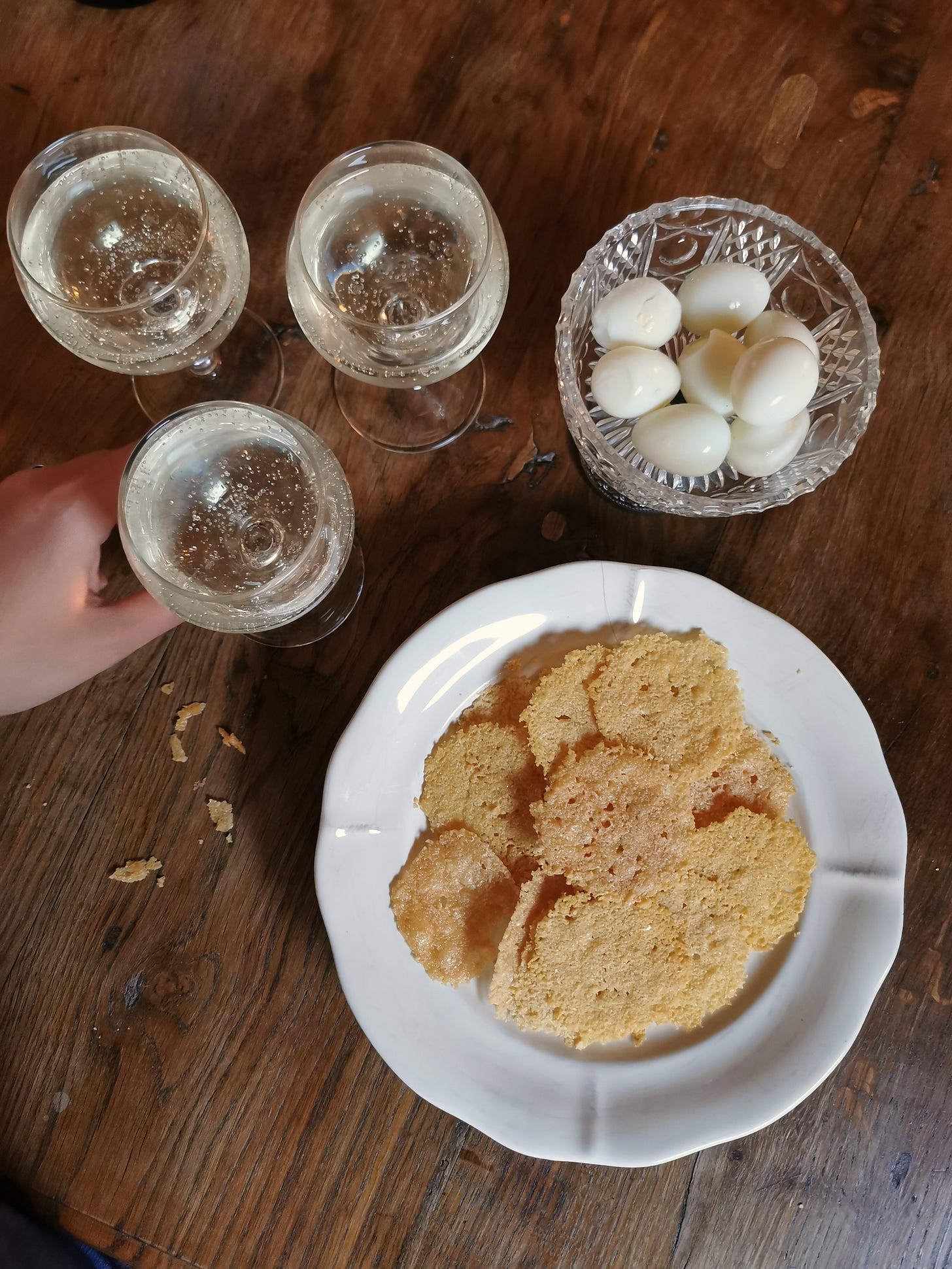


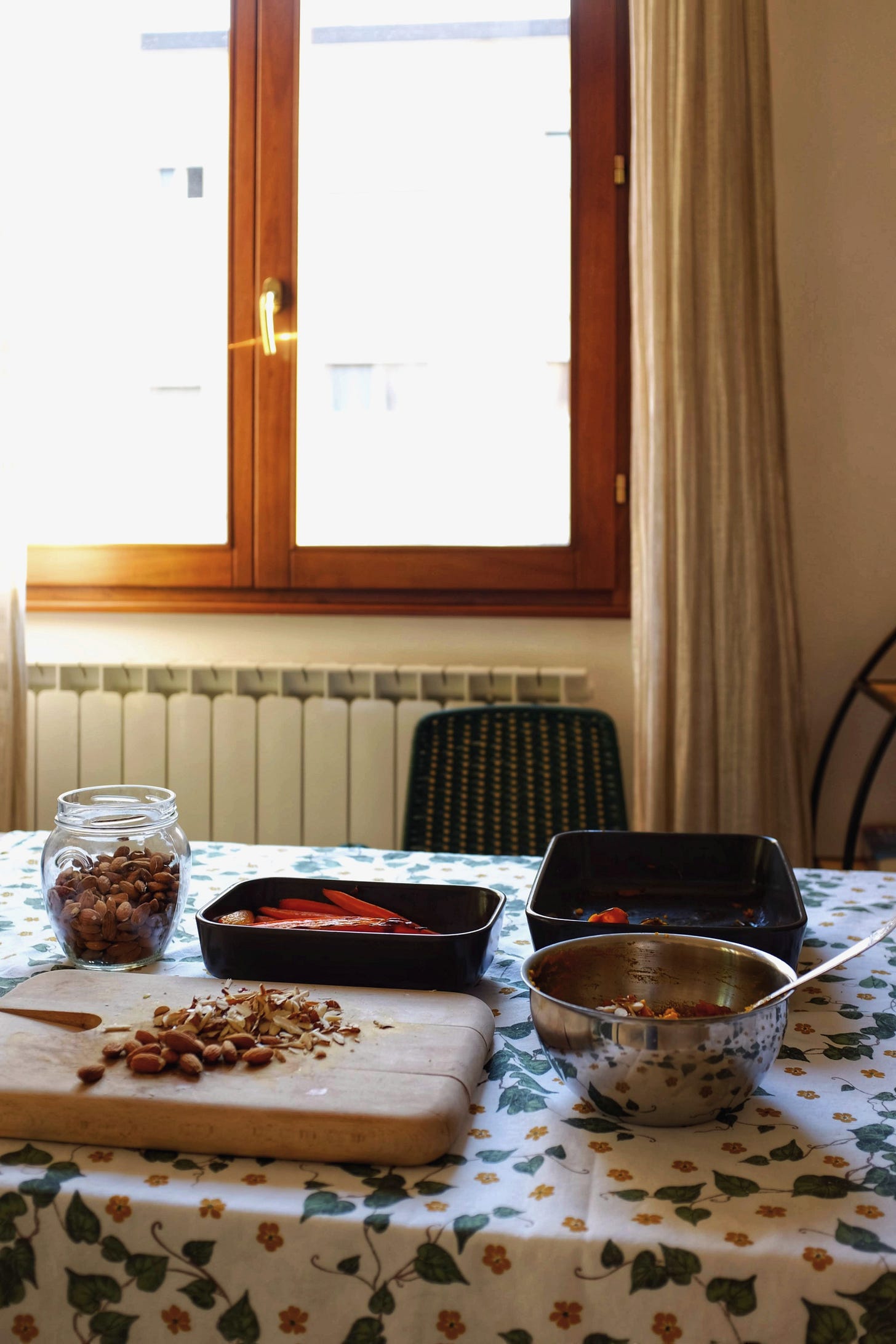
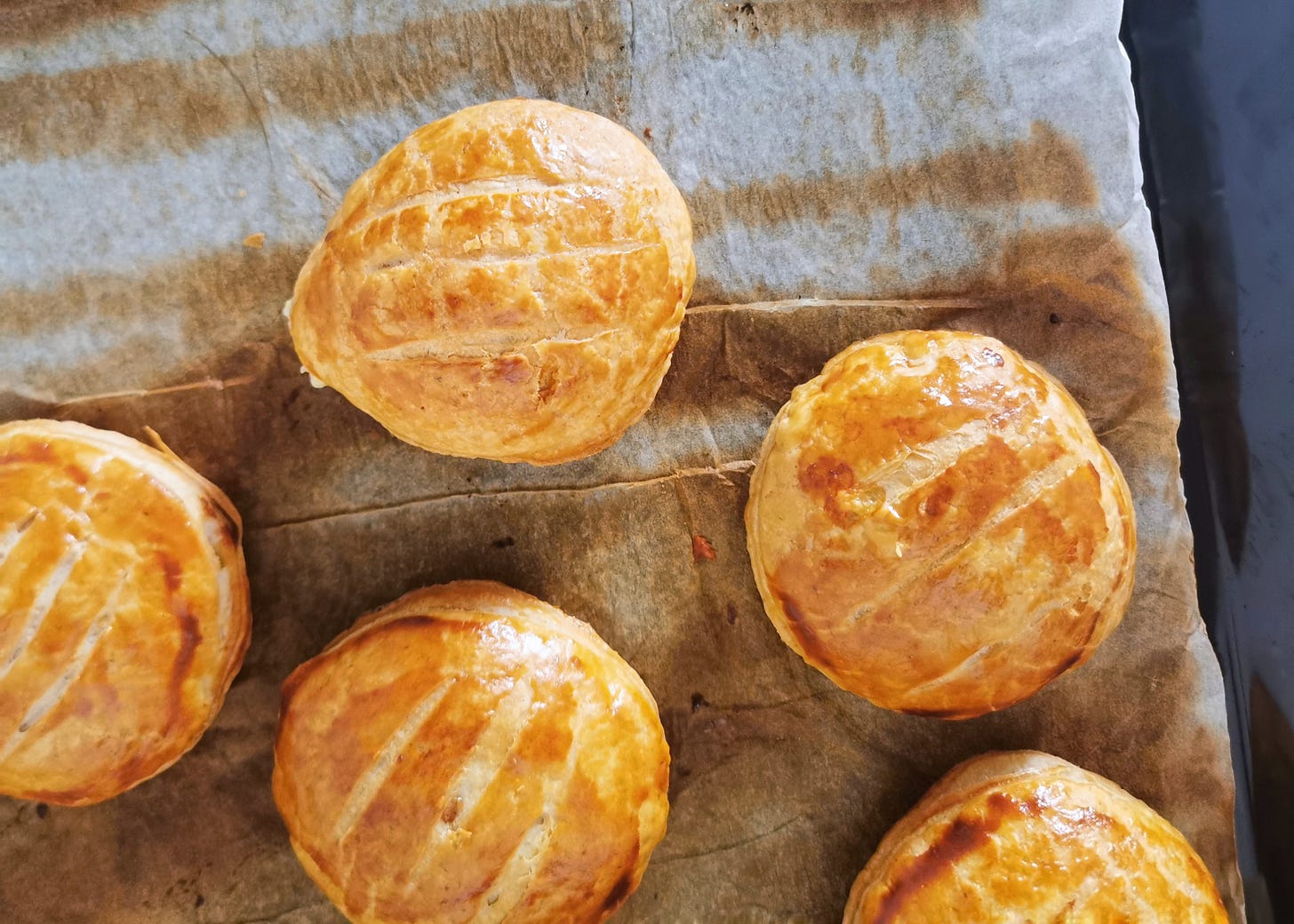




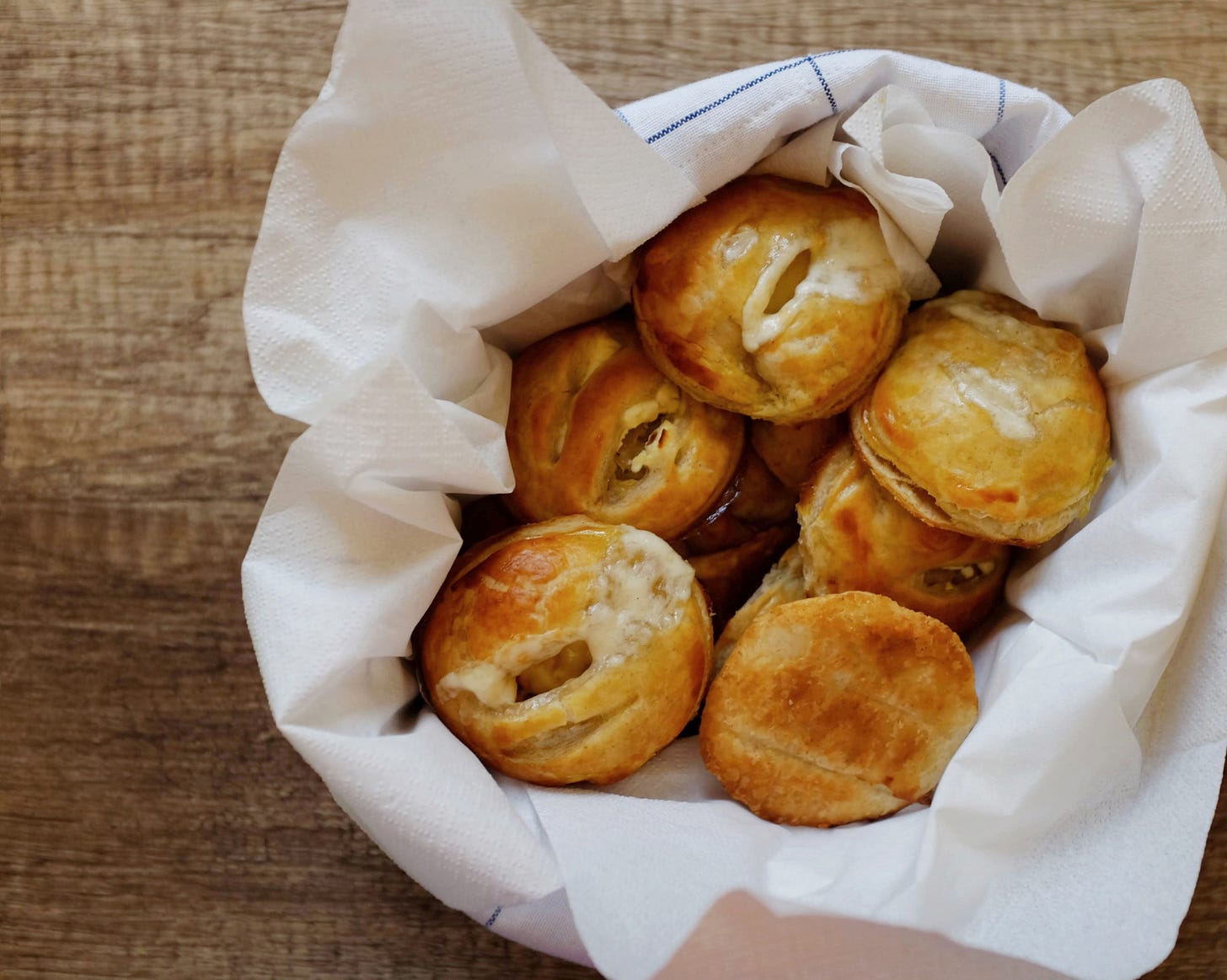
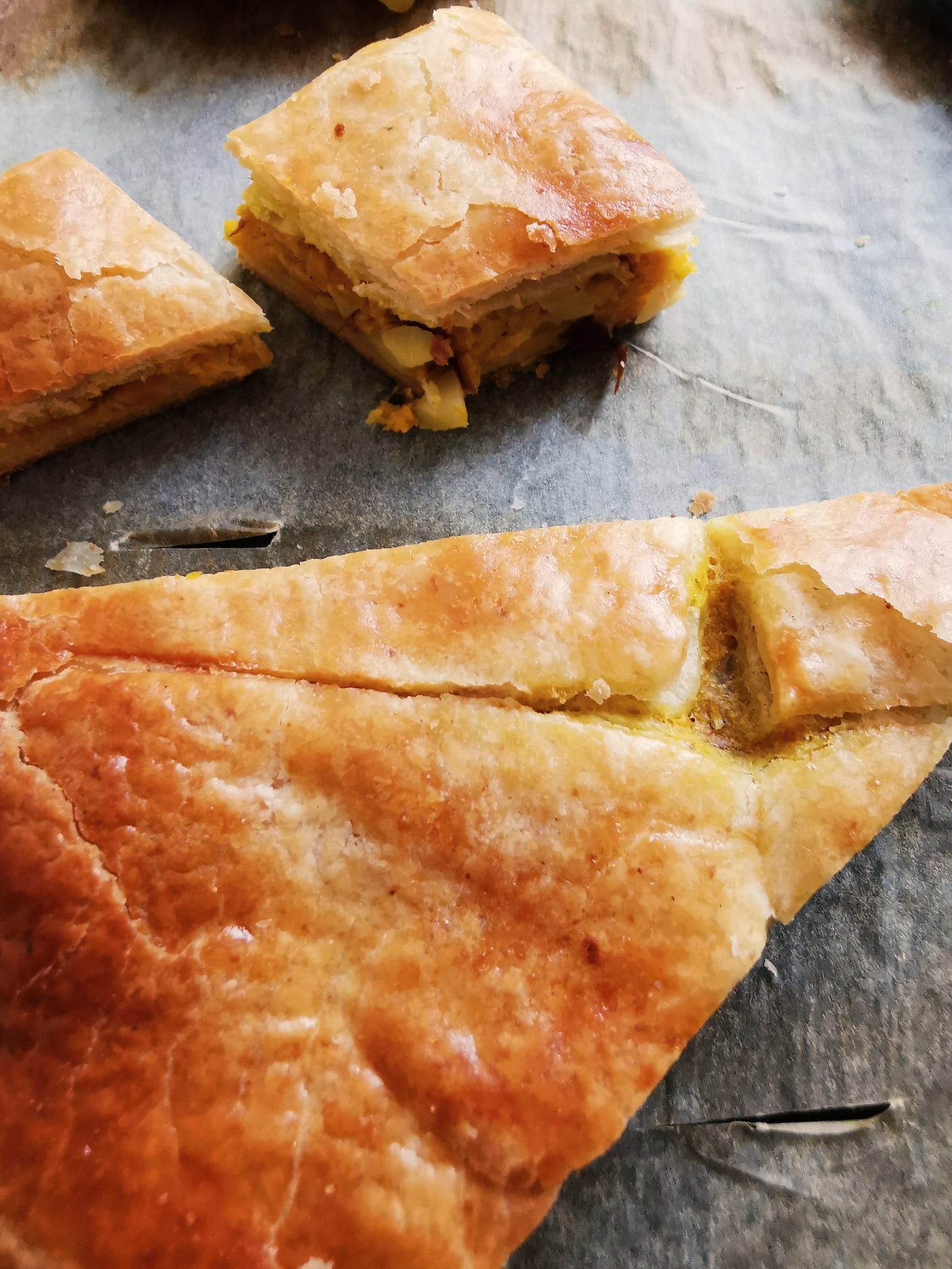



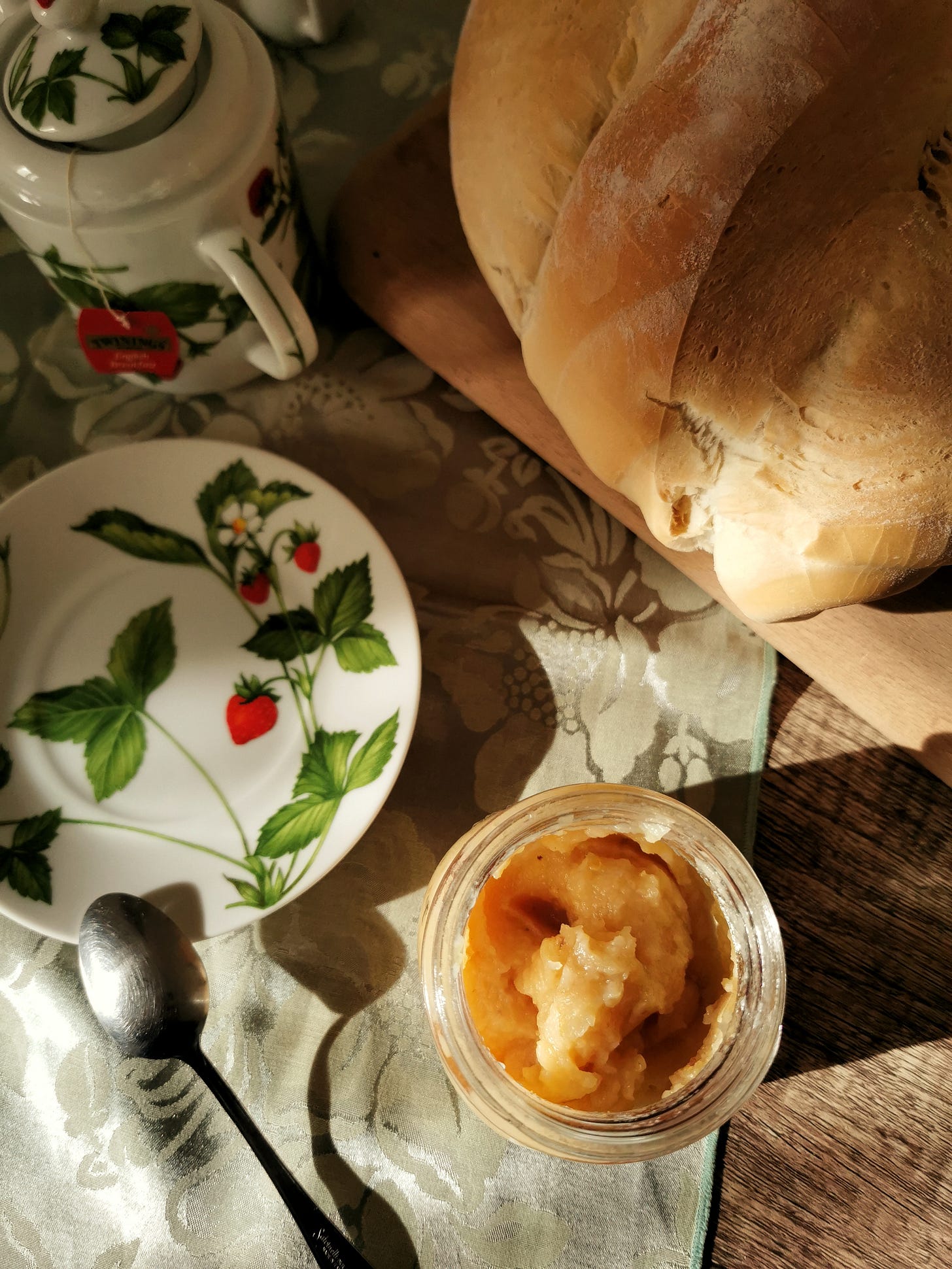

Love this newsletter… so chatty and personal feeling, as tho it were a letter to a good friend.
Regarding cooking the whole Quince: There is nothing more beautiful than quince jam… and the best way to achieve that is to wash the quinces thoroughly so all the fuzzy bit is gone, and put them in a pot of water to simmer away until you can pierce them with a fork. Then you peel them and can do one of 2 things: cut into strips or grate on the “biggest” part of the grater. Procède with the quince as you would for any fruit for jam making, you will want to add some of the boiling water back in too… just so the mixture is loose once the sugar has been incorporated. Quince has a lot of pectin. Do the “cold plate” test to determine when it’s ready to put in clean, sterilized jars.
The color is a true Venetian orange. Abd the taste is subtle and marvelous with cheese or cold meats. ❤️
Brilliant. Enjoying every word every memory. Keep up all the good work you do.